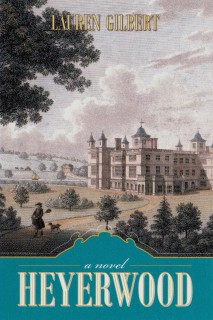Cook with Food
|
While you may suspect that this article is about the capture of a criminal, today we are actually looking at food. English cuisine in the Georgian and Regency era is a special interest for me. I enjoy learning about old cooking techniques and dishes. As a reader and writer of historical fiction, I think the inclusion of the foods of a given period makes the work more interesting and brings the time alive. After all, we all have to eat, and we can all relate to a discussion of food.
Collaring involves seasoning, rolling and binding your food material. It can be rolled and tied in a cloth or bound with string. The roll itself is referred to as a collar. It can be pickled or boiled or baked. It can be chopped or shredded, or a whole piece.
I have found several recipes for collared beef, pork and mutton, and a few for collared eel. The results range from a pickled dish to one that sounds similar to a rolled stuffed roast. Many of these dishes are heavily salted, and the recipes indicate that they can be stored for a time. Recipes for collared meats go back to Elizabethan times and were popular through the Georgian and Regency eras.
The Elizabethan recipe for collared beef that I read had no list of ingredients. Quantities are not shown, so the amount of seasoning used would have been a matter of personal taste. I suspect the particular spices and herbs used would have varied with what the cook could afford and the season of the year. The recipe and technique, which includes soaking in salted water, can be read in its entirety at the link provided below for the Elizabethan Era site. The finished product would be cooled, and served in slices. As you can see, the final dish sounds very much like a rolled roast we might serve today.
Eliza Smith, in THE COMPLEAT HOUSEWIFE, included recipes for collared salmon and collared eel. Her salmon was brushed with egg yolk, and then spread with a wide range of ingredients including oysters, lobster, sweet herbs, spices (including cloves, nutmeg and pepper) and breadcrumbs. It was then rolled and bound. After a mixture of water, salt and vinegar was brought to a boil, she put in the salmon collar with more herbs and spices. It was boiled for about 2 hours, and then removed to a pan. When the cooking liquid was cold, the salmon was replaced in the liquid and let to stand until used. If not to be eaten at the time, the salmon collar and liquid could have been placed in a pot, which was then filled with purified butter for storage.
On the blog The Cookbook of Unknown Ladies, a recipe for collared brawn is discussed. Raw meat from the head of a pig was removed, and the pieces placed in salt for 3 days, spiced (including cloves and mace), and wrapped in a cloth. Then it was boiled in a mixture of vinegar, salt and water until tender. After being removed from the liquid and cloth, the brawn was wrapped tightly in a fresh cloth and tied, then cooled. The liquid (referred to as “pickle”) was then brought to a boil with fresh water, and then cooled, and the brawn was kept in the liquid. (The recipe advises making fresh liquid or liquor every two weeks.)
Although I am not sure how long these dishes could actually be held, I can see how some of these and similar recipes maintained their popularity in English cuisine for several centuries. The preparations and seasonings used in collaring meat and fish would have allowed for varied flavors and textures. In the days before refrigeration, being able to prepare and store a dish must have been a blessing, especially if serving an unexpected visitor. Some of these recipes could be readily adapted for modern taste as well.
Sources include:
Glasse, Hannah. THE ART OF COOKRY MADE PLAIN AND EASY. First published 1747, new edition published 1805: Cotton and Stewart, Alexandria. Facsimile of 1805 edition with historical notes by Karen Hess, published 1997: Applewood Books, Bedford, MA.
Smith, Eliza. THE COMPLEAT HOUSEWIFE. First published 1758. Facsimile edition published 1994: Studio Editions, Ltd., London, England.
The Cookbook of Unknown Ladies. "To Collar Meat." Posted October 2, 2013 by Westminster City Archives. HERE. Last viewed 1/30/2016.
Elizabethan Era. Alchin, L.K., author. “Collar’d Beef Old Elizabethan Recipe.” HERE.
Image for THE ART OF COOKERY MADE PLAIN AND EASY from Wikimedia Commons HERE
Image "Cook with Food" by Franz Snyders (1579-1657) from Wikimedia Commons HERE
Image for THE COMPLEAT HOUSEWIFE from Wikimedia Commons HERE
~ ~ ~ ~ ~ ~
Lauren Gilbert is the author of HEYERWOOD, A Novel and a member of the Jane Austen Society of North America. She lives in Florida with her husband, and is working on another novel, A RATIONAL ATTACHMENT. For more information, visit her website.


































